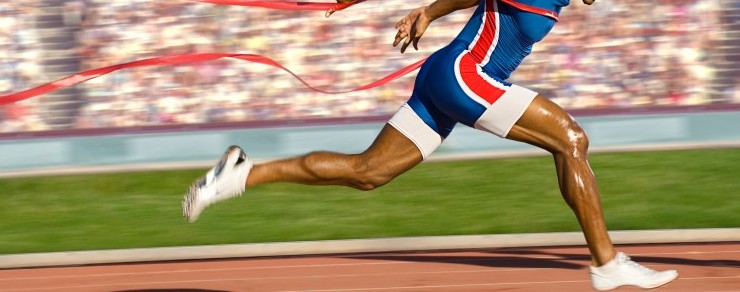
One of the many training ideas I have learned from Charlie Francis through the likes of Buddy Morris and James "The Thinker" Smith is the intensity (effort) of speed training. A basic takeway fro me has always been:
Make sure your athletes sprint intensity is high enough to develop speed or low enough to elicit recovery.
That middle ground (Below 90% and above 75%) is normally not fast enough to get faster and too taxing to recover from. Thus, the incorporation of competitive sprints and tempo runs in our programming.
Carl Valle shared and article from the Journal of Sports Science which seems to reinforce this thought process.
Not quite so fast: effect of training at 90% sprint speed on maximal and repeated-sprint ability in soccer players.
J Sports Sci. 2014 Dec;32(20):1979-1986. Epub 2014 Nov 11.
Abstract
Abstract The aim of the present study was to investigate the effect of training at an intensity eliciting 90% of maximal sprinting speed on maximal and repeated-sprint performance in soccer. It was hypothesised that sprint training at 90% of maximal velocity would improve soccer-related sprinting. Twenty-two junior club-level male and female soccer players (age 17 ± 1 year, body mass 64 ± 8 kg, body height 174 ± 8 cm) completed an intervention study where the training group (TG) replaced one of their weekly soccer training sessions with a repeated-sprint training session performed at 90% of maximal sprint speed, while the control group (CG) completed regular soccer training according to their teams' original training plans. Countermovement jump, 12 × 20-m repeated-sprint, VO2max and the Yo-Yo Intermittent Recovery Level 1 test were performed prior to and after a 9-week intervention period. No significant between-group differences were observed for any of the performance indices and effect magnitudes were trivial or small. Before rejecting the hypothesis, we recommend that future studies should perform intervention programmes with either stronger stimulus or at other times during the season where total training load is reduced.
Access the original article here
Here are some thoughts via a FaceBook Thread from Valle and Dan Baker which were very insightful in interpreting the data.
90% isn't going to do much, so if you are going to sprint, time and find out what does help. Hint, more than 90%
- Carl Valle
This study shows that you do either maximal speed training (@100% OR CLOSE TO IT) or do energy system training (aerobic/anaerobic). Repeat speed does not make you faster or improve repeat sprint ability anymore than normal sport training, so why bother. Buchheits long term study showed if you did max sprint work and aerobic conditioning, you get an improvement in repeat sprint tests (as well as get faster and aerobically fitter). I agree with Carl Valle, get data and make informed decisions on training content.
- Dan Baker
Additional References via Dan Baker:
Changes in repeated-sprint performance in relation to change in locomotor profile in highly-trained young soccer players by MARTIN BUCHHEIT & ALBERTO MENDEZ-VILLANUEVA. JSS 2014.
"To conclude, present results show that changes in repeated-sprint performance are moderately-to- largely related to changes in (young) players’ loco- motor profile, which is determined by their maximal sprinting and aerobic speeds. These results suggest that these two key running speeds, which can be easily assessed via low-cost field test, can be used to monitor training-induced changes in more soccer- specific efforts such as repeated sprints."
Given these results based upon longer term training, why bother doing repeat sprint training. GET FAST & GET FIT!, takes care of most shit in soccer, physical wise....
- Dan Baker









